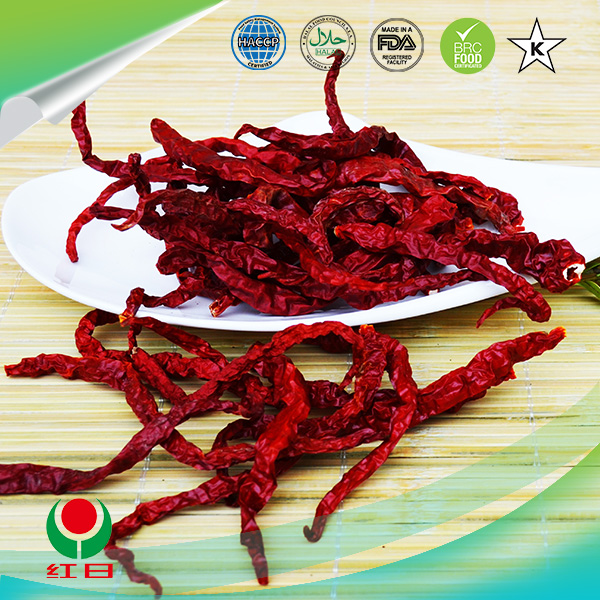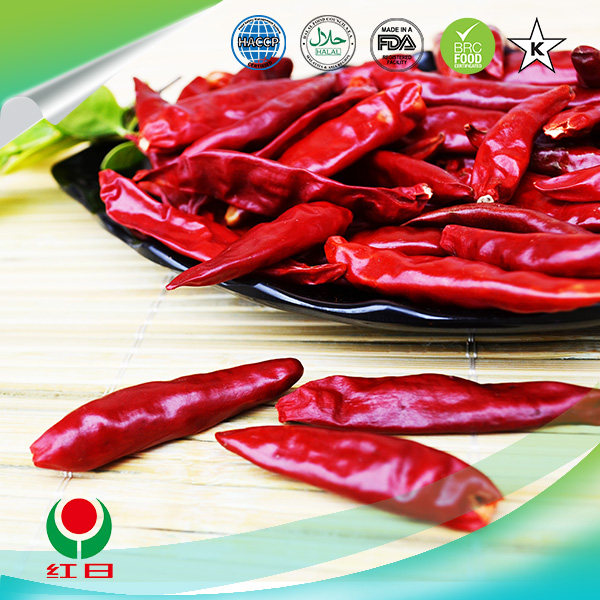- No. 268 Xianghe Street, Economic Development Zone of Xingtai city, Hebei 054001 China
- Byron@hbhongri.cn
Bulk Dried Chiles – Wholesale Quality, Fresh, Fast Shipping
The Insider’s Guide to Sourcing Bulk Dried Chiles
If you’re sizing up bulk dried chiles for a blend, sauce line, or foodservice program, you’re not alone. Demand keeps climbing; in fact, global output of chilies and peppers hit around 36 million tonnes in 2020, with China producing about 46%—a staggering footprint that quietly shapes price and availability. I’ve walked farms and cleaning lines from Hebei to Jalisco; the delta between a good lot and a great lot usually comes down to drying discipline, color retention, and—honestly—how obsessive the vendor is about testing.

What’s on Offer (and Why It Matters)
From China-origin Chaotian and Yidu to Mexican-adjacent styles like guajillo, California, and puya, Hongri Spice’s plating farms in Xingtai, Hebei (No. 268 Xianghe Street, Economic Development Zone, 054001) ship consistent volumes season after season. Many customers say the color stability holds up better in long distribution chains, which—surprisingly—can be as much about post-harvest airflow as genetics.
Product Specs (typical, ≈ ranges; real-world use may vary)
| Attribute | Chili pepper (whole/pods) |
|---|---|
| Varieties | Chaotian, Yidu, Guajillo-style, California-style, Puya |
| Heat (Scoville) | ≈ 1,500–25,000 SHU by variety (HPLC, AOAC 995.03) |
| Moisture | ≤ 12% (ISO 939) |
| Color (ASTA) | ≈ 60–110 ASTA, variety-dependent |
| Foreign Matter | ≤ 0.5% visual; metal-detected (Fe/Non-Fe/SS) |
| Micro (TPC/Yeast&Mold) | Target TPC ≤ 1e6 cfu/g; YM ≤ 1e4 cfu/g; Salmonella n.d./25 g |
| Packaging | 25 kg poly-lined woven bag; palletized; lot-coded |
| Service life | 18–24 months cool, dry, dark; |

Process Flow (how the sausage—well, the salsa—gets made)
- Materials: selected cultivars by capsaicinoid profile, field-graded.
- Drying: sun/air drying with controlled airflow; final oven-finish in damp seasons.
- Cleaning: destoning, aspiration, optical sorting, stem/seed adjustment, metal detection (≥2.0 mm SS typical).
- Testing: moisture (ISO 939), color (ASTA), capsaicin (AOAC 995.03), micro per customer spec; pesticide and heavy-metal screens on request.
- Certifications: HACCP, ISO 22000/FSSC pathways; compliance aligned to Codex for spices and culinary herbs.
Where bulk dried chiles Win
Applications: spice blends, meat rubs, instant noodles, hot sauces, snack coatings, and, yes, cocktail rims (bartenders get creative). Advantages include predictable heat, better color in retort sauces, and shelf-life that plays nicely with global logistics. One R&D chef told me their yield loss dropped 3% after switching suppliers—mostly less stem weight.
Vendor Snapshot (quick comparison)
| Vendor | Certs | MOQ | Lead Time | Traceability | Notes |
|---|---|---|---|---|---|
| Hongri Spice (Hebei) | HACCP, ISO 22000 in progress | ≈ 1 MT | 2–4 weeks ex-works, seasonal | Lot-level farm linkage | Strong color control; flexible cuts |
| Importer A (US/EU) | GFSI (FSSC 22000) | ≈ 500 kg | Stock + 1–2 weeks | Multi-origin blend | Premium priced |
| Exporter B (LATAM) | HACCP | ≈ 1–2 MT | 3–6 weeks | Farm cluster | Excellent guajillo aroma |
Customization and QA
Need bulk dried chiles with seed count ≤5% or a specific SHU target? Ask for selection at intake plus post-clean optical sorting, then verify by HPLC. Some buyers also specify ASTA ≥90 for brighter reds in emulsified sauces. To be honest, a short pilot run saves headaches—get two lots, do retention samples, and lock the COA template.

Real-World Anecdotes
- Snack plant, EU: switched to bulk dried chiles with lower moisture and saw 1.5% fewer clumps in seasoning drums—small, but it pays.
- Sauce brand, SE Asia: tightened SHU to 8,000–10,000 via blend of Yidu + puya; consumer panels called it “clean heat,” which is what marketing wanted.
Storage, Safety, and Standards
Store cool and dark; reclose inner liners; rotate FIFO. Ask for micro, pesticide, and heavy-metal certificates aligned to Codex and your market. It seems that lots traveling by sea benefit from desiccant packs in containers, especially during monsoon routes.
Citations
- FAOSTAT, Crops and Livestock Products: Chilies and peppers production, 2020.
- AOAC 995.03: Capsaicinoids in Capsicum by HPLC.
- ASTA Analytical Methods, color and moisture guidance.
- Codex STAN 326-2017: Standard for Spices and Culinary Herbs.
- ISO 22000:2018 Food safety management systems.
-
Capsicum frutescens oleoresin – High Purity, Food GradeNewsNov.17,2025
-
Capsicum Frutescens Oleoresin – Natural Heat & FlavorNewsNov.17,2025
-
Peppereka Powder – Fresh, Vibrant Color & Sweet AromaNewsNov.17,2025
-
Paprika Oleoresin | Natural Red Color, Heat & Flavor BoostNewsNov.17,2025
-
Pure Turmeric Extract 95% Curcumin | Potent, Lab-TestedNewsNov.17,2025
-
Red Papper Pods – Premium Sun-Dried, Bold Heat & AromaNewsNov.10,2025







